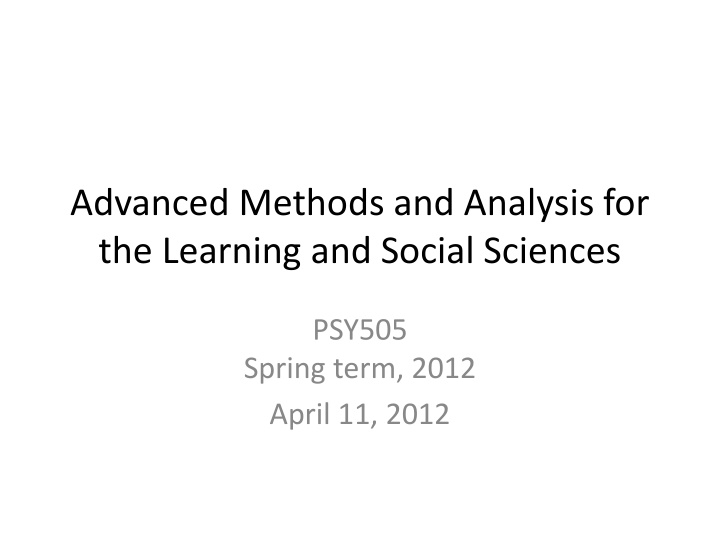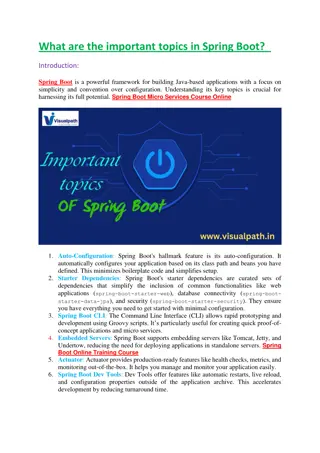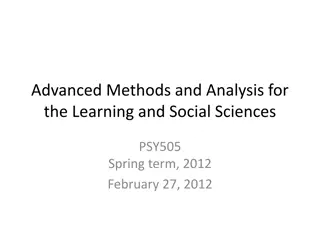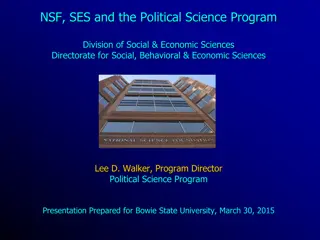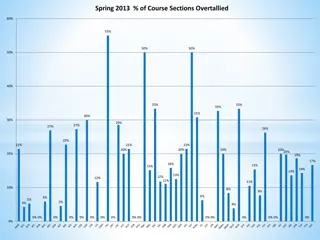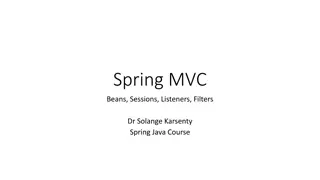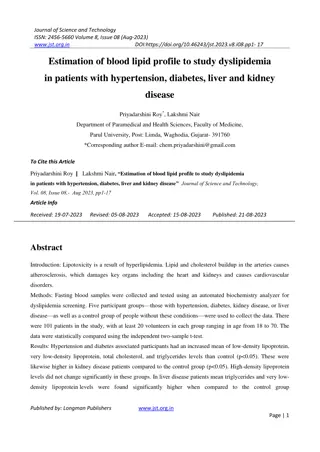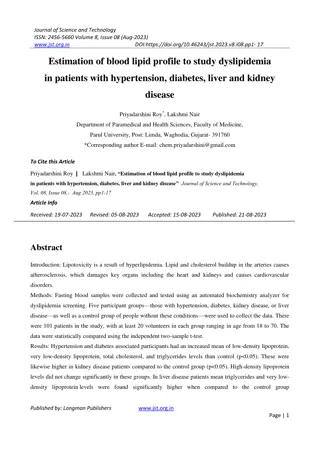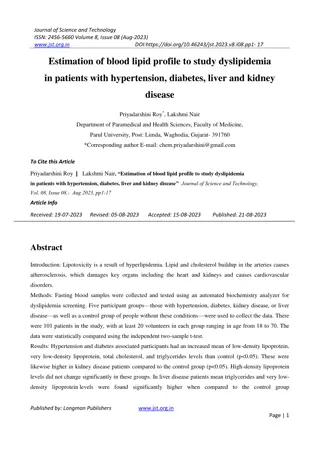Advanced Methods and Analysis for Learning Sciences - Spring 2012
A comprehensive overview of power analysis in research, covering methods to determine sample size for statistical significance based on effect size and probability. Explains when and why researchers use different types of power analysis before and after conducting studies. Includes mathematical details and practical applications for various statistical tests.
Download Presentation

Please find below an Image/Link to download the presentation.
The content on the website is provided AS IS for your information and personal use only. It may not be sold, licensed, or shared on other websites without obtaining consent from the author.If you encounter any issues during the download, it is possible that the publisher has removed the file from their server.
You are allowed to download the files provided on this website for personal or commercial use, subject to the condition that they are used lawfully. All files are the property of their respective owners.
The content on the website is provided AS IS for your information and personal use only. It may not be sold, licensed, or shared on other websites without obtaining consent from the author.
E N D
Presentation Transcript
Advanced Methods and Analysis for the Learning and Social Sciences PSY505 Spring term, 2012 April 11, 2012
Todays Class Power Analysis
Power Analysis A set of methods for determining The probability that you will obtain a statistically significant result, assuming a true effect size and sample size of a certain magnitude
Or The reverse Given a certain true effect size, and a desired probability of obtaining a statistically significant result, what sample size is needed?
Why? When? Why might a researcher want to do each type of power analysis? When might a researcher want to do each type of power analysis?
When used Effect size + Power --> Sample Size Usually used before running study to pick sample size
When used Effect size + Sample Size --> Power Usually used after running study to explain to thesis committee why more subjects are needed Can also be used to choose between or justify choice of statistical test
Power analysis Can be computed from Effect Size / Cohen s d (M1 M2)/ (pooled SD, e.g. ) r Difference in two r values And several other metrics
Power analysis Can be computed for Single-group t-test Two-group t-test Paired t-test F test Sign test Etc., etc., etc.
Mathematical Details Differ for different statistical tests and metrics (see Lachin paper for several examples) Possible to do this in online power calculators
Big Idea Given the sample size, true effect size, and true standard deviation Every time you run the study you will get a different exact result, governed by the true standard deviation and sample size With power analysis, you can determine the probability that you ll get a sample effect size in the range you want a statistically significant result
Sign Test Example (Courtesy of John McDonald)
Monte Carlo Example Simple test: Is the group mean greater or less than zero? Let s compare to online power calculator at http://www.divms.uiowa.edu/~rlenth/Power/
What is a good value for power? Conventionally, power = 0.80 is treated as good Kind of a magic number How much risk are you willing to accept?
Play with calculator http://www.cs.uiowa.edu/~rlenth/Power/ Two-sample t-test
Volunteer #1 If the true effect size is 0.5 how big a sample do you need to achieve Power = 0.8?
Volunteer #2 If the true effect size is 0.2 how big a sample do you need to achieve Power = 0.8?
Volunteer #3 If your control condition gains 20 points pre-post And your experimental condition gains 40 points pre- post And the pooled standard deviation is 30 points And you have 20 students in each condition What s your statistical power?
How can statistical power be increased? Both in theory, and in real life
How can statistical power be increased? Increase sample size
How can statistical power be increased? Increase difference in means Make your intervention better
How can statistical power be increased? Increase difference in means Make your control condition worse Some researchers make the mistake of picking a control condition that s impossibly good ScienceAssistments versus ScienceAssistments, with one less potential IV This doesn t mean you should fish for a control condition that is absurdly awful Principle-based explanation in ASSISTments versus Explaining fractions through interpretive dance Fun fractions game versus Learning math through reading textbooks
How can statistical power be increased? Increase difference in means Make your control condition worse Some researchers make the mistake of picking a control condition that s impossibly good ScienceAssistments versus ScienceAssistments, with one less potential IV This doesn t mean you should fish for a control condition that is absurdly awful Principle-based explanation in ASSISTments versus Explaining fractions through interpretive dance Fun fractions game versus Learning math through reading textbooks written in Danish
How can statistical power be increased? Reduce standard deviation through more homogenous sample stratification of sample (and include stratification in model) Improvement of measure reliability
Jacob Cohen on Statistical Power It is not at all clear why researchers continue to ignore power analysis. The passive acceptance of this state of affairs by editors and reviewers is even more of a mystery. At least part of the reason may be the low level of consciousness about effect size I have suggested that the neglect of power analysis simply exemplifies the slow movement of methodological advance An associate editor of this journal suggests another reason: Researchers find too complicated, or do not have at hand, either my book or other reference material for power analysis
Jacob Cohen on Statistical Power It s true that one sees Relatively few statistical power analyses in published papers More than a few analyses with low statistical power Why might that be? Aside from low levels of consciousness
Some Reasons Why Sample sizes determined by feasibility rather than a priori decision
Some Reasons Why Larger sample sizes in real-world research often imply heterogeneity (and higher variance) Between running a study with insignificant statistical power, and running no study at all
Some Reasons Why Hard to guess a priori what level of effect size is reasonable
Some Reasons Why Statistical power harder to do for the complex statistical tests that are increasingly common
Asgn. 10 Questions? Comments?
Next Class No Class Monday! Patriots Day
Next Class Wednesday, April 18 3pm-5pm AK232 Post-hoc Adjustments Readings Rosenthal, R., Rosnow, R.L. (1991) Essentials of Behavioral Research: Methods and Data Analysis, 2nd edition. p. 329-333. Verhoven, K.J.F., Simonsen, K.L., McIntyre, L.M. (2005)Implementing false discovery rate control: increasing your power. Oikos, 108, 643- 647. Assignments Due: None
